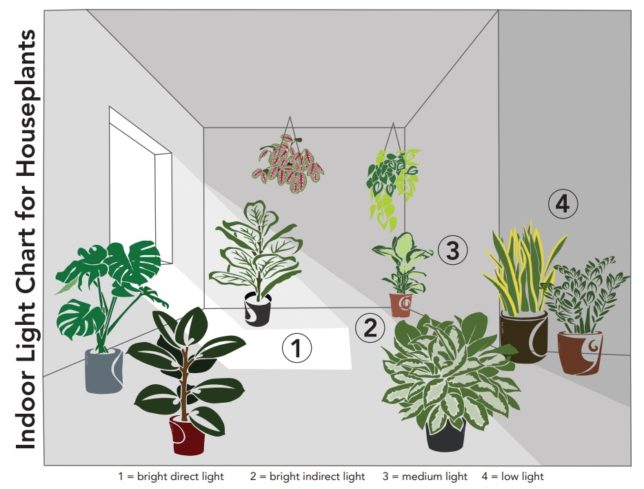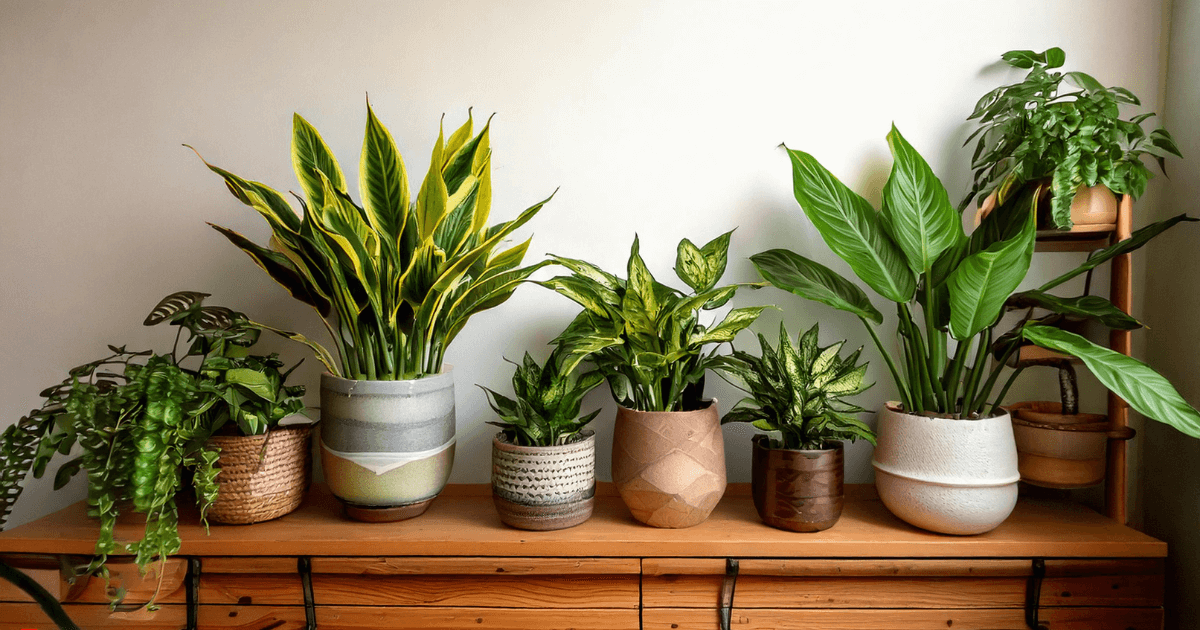Transform Your Home With Beautiful Low-Light Indoor Plants and Their Benefits
Incorporating low-light indoor plants right into your home can considerably enhance both the aesthetic and environmental quality of your home. These plants, which prosper in dim conditions, offer not only as ornamental elements however also as natural air cleansers, making them ideal for metropolitan residents or those with minimal sunlight direct exposure. As we discover the numerous types of low-light plants and their advantages, you may find unexpected means to integrate them into your home that can change your environments in means you could not have expected.
Advantages of Low-Light Plants
Low-light plants provide countless benefits for interior environments, making them a superb selection for both amateur and skilled gardeners. Among the primary benefits is their versatility to low-light problems, enabling people to boost their living areas without the need for extensive sunlight direct exposure. This characteristic makes them perfect for apartments, offices, and various other locations with minimal all-natural light.

Additionally, including low-light plants right into home decoration can boost the visual allure of a room. Their lush vegetation and differed textures create a calming atmosphere, contributing to overall well-being. The visibility of greenery has been linked to reduced stress degrees and boosted efficiency, making low-light plants a functional option for enhancing both physical and psychological wellness in indoor settings.
Leading Low-Light Indoor Plants
While lots of indoor plants flourish in intense light, a number of varieties are particularly fit for low-light problems, making them optimal for various indoor rooms. One popular choice is the Serpent Plant (Sansevieria), recognized for its striking upright fallen leaves and durability, calling for marginal care. One more outstanding choice is the Pothos (Epipremnum aureum), which includes heart-shaped leaves and can trail beautifully from wall mounts or shelves, growing in low light and including a lush touch.
The ZZ Plant (Zamioculcas zamiifolia) is celebrated for its shiny fallen leaves and capacity to endure overlook, making it best for hectic way of livings. Similarly, the Peace Lily (Spathiphyllum) not only tolerates low light however likewise creates magnificent white blossoms, boosting any kind of area's visual.
For an one-of-a-kind touch, take into consideration the Cast Iron Plant (Aspidistra elatior), which certainly measures up to its name, prospering in the darkest edges of your home. Finally, the Chinese Evergreen (Aglaonema) provides a variety of leaf patterns and shades while being incredibly flexible in low-light problems. These plants not just enhance indoor environments yet likewise contribute to air filtration, boosting your home.
Care Tips for Low-Light Plants

Watering practices are crucial; these plants commonly choose a little dry problems. Overwatering can result in root rot, so ensure that the leading inch of dirt is dry prior to sprinkling once again. Use pots with water drainage holes to allow excess dampness to escape.
Humidity is another crucial factor. Several low-light plants, such as brushes and peace lilies, take advantage of higher moisture levels. To enhance humidity, think about misting the fallen leaves or placing a tray of water near the plants.
Fertilization must be come close to with caution. During the expanding period, make use of a watered down, well balanced fluid plant food monthly to sustain development, yet stay clear of fertilizing during the dormant winter season months.

Imaginative Ways to Present Plants
Interior plants can work as captivating prime focus in any type of space, improving both visual allure and setting. Creative displays can elevate the visual impact of low-light plants, making them an important component of your home style. One reliable approach is to make use of tiered plant stands, which permit you to display numerous plants at differing elevations while making best use of flooring room.
Hanging planters are an additional cutting-edge alternative, developing a feeling of deepness and attracting the eye upward. Consider macramé hangers or wall-mounted shelves to present a special structure and style.
For a more organized technique, use geometric terrariums or glass containers to house your plants, adding a modern touch to your interior garden. You can additionally repurpose classic products, such as teacups or wooden crates, for a diverse screen that reflects your individuality.
Enhancing Home Atmosphere With Plants
Integrating low-light plants right into your home not only boosts aesthetic appeal yet likewise contributes significantly to the total ambiance. These plants act as natural decor components, introducing a feeling of view it now serenity that can transform any type of room. The presence of plant fosters a calming environment, which is especially helpful in high-stress atmospheres such as home offices or living areas.
Low-light plants, such as snake plants, pothos, and ZZ plants, are not just aesthetically pleasing however also enhance indoor air top quality by filtering toxins. This dual feature enhances the atmosphere further, creating a much healthier living room (Best low-light indoor plants). The strategic placement of these plants can likewise affect the understanding of room; for example, tall plants can attract the eye upwards, making ceilings appear higher and spaces extra roomy
In addition, differing textures and colors of vegetation include deepness to indoor design, permitting innovative expression in home designing. Whether placed on shelves, in corners, or as centerpieces, low-light plants can elevate the mood of any area. In recap, including these plants right into your home is a reliable means to foster a warm, inviting atmosphere while profiting of check these guys out enhanced air high quality and aesthetic adaptability.
Verdict
Including low-light interior plants right into home settings supplies countless advantages, consisting of boosted visual allure and boosted air top quality. These durable plants, such as the Snake Plant and Tranquility Lily, require minimal light and maintenance, making them suitable for varied way of livings. Their capacity to filter toxins adds to a much healthier home, while their diverse appearances and shades enhance indoor decoration (Best low-light indoor plants). Inevitably, the addition of low-light plants cultivates a calm and welcoming atmosphere, transforming any home into a peaceful oasis.
While numerous interior plants grow in bright light, several types are especially well-suited for low-light conditions, making them ideal for numerous indoor spaces. One reliable technique is to utilize tiered plant stands, which allow you to display several plants at differing heights while optimizing floor area.
Low-light plants, such as serpent plants, pothos, and ZZ plants, are not only cosmetically pleasing but additionally improve indoor air quality by filtering system toxins. Best low-light indoor plants. The calculated placement of these try this website plants can likewise influence the assumption of space; for circumstances, high plants can draw the eye upwards, making ceilings show up higher and spaces more roomy
These resistant plants, such as the Snake Plant and Tranquility Lily, need minimal light and upkeep, making them suitable for varied lifestyles.